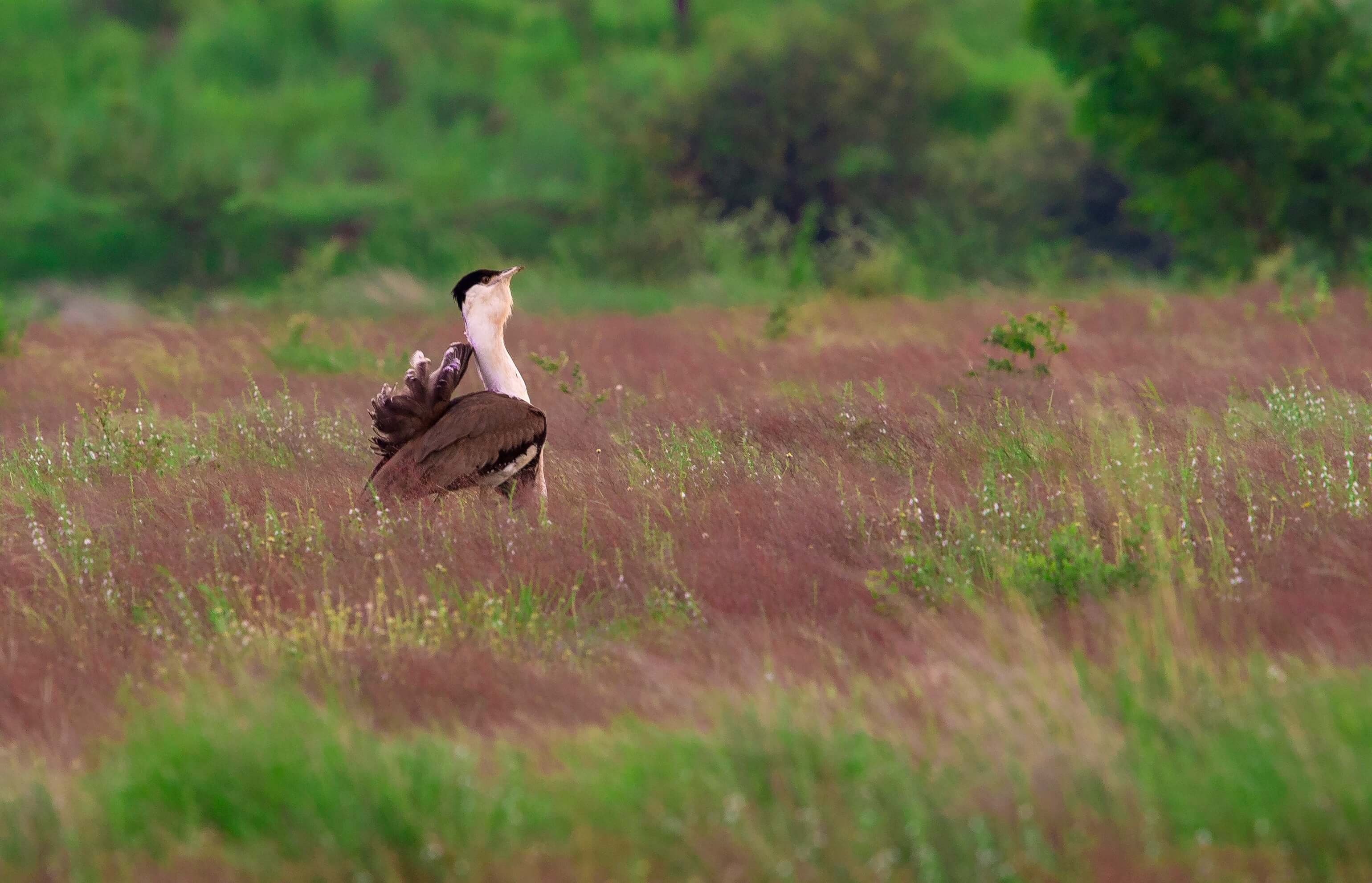Great Indian Bustard
GIB is an agro-grassland bird endemic to the Indian Subcontinent. Known locally as Godawan in Rajasthan, it is a Critically Endangered species as per IUCN Red List. It belongs to the family Otididae and exhibits sexual dimorphism; the male possesses a conspicuous gular pouch that plays a vital role in mating display.
The GIB is an omnivorous bird. The species has a current viable population of 100- 125 individuals in India, and mainly survives in the Thar Desert of Rajasthan that holds about 100 individuals. Of the remaining individuals, ~ 6-7 birds are found in Gujarat; ~ 2-3 in Maharashtra; ~ 10 birds in Karnataka and ~ 3-4 in Andhra Pradesh. If the present trends continue, the GIB could become locally extinct, given that it is extinct over almost 90% of its former range.
The BNHS has initiated a programme in the Thar Desert (in the arid region of Jaisalmer) with the aim to conserve the Critically Endangered Great Indian Bustard. The goal is to conduct landscape-level research and garner the support of the local people at site level to conserve the birds in non-protected areas.
Objectives of the programme
- Developing village-wise action plans with a network of local people to save Great Indian Bustard Ardeotis nigriceps (GIB) in non-Protected Areas of Thar Desert, Rajasthan
- To acquire the help of the local community for the conservation of GIB in human-dominated landscape, outside Protected Areas, especially in Rajasthan.
- To develop a network of skilled youth from the villages with GIB distribution for monitoring the birds, and use their inputs to conserve the species effectively and restore its available habitats as conservation priority areas.
- To reduce the existing threats to the species by focussing on the effects of land use changes and the energy sector on the extant population of GIB in the breeding sites.
